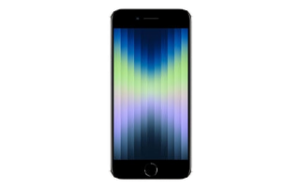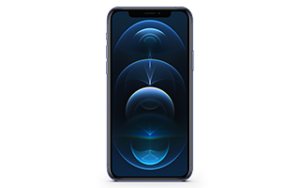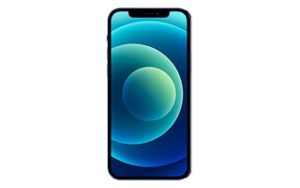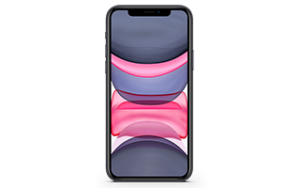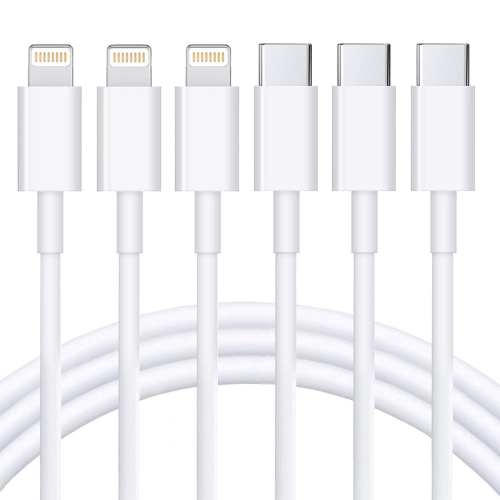Buying an iPhone on a budget but worried about storage? Let’s talk about it
Is 64GB good enough for iPhone 11 and 12 users?
*Cheapest monthly plan price when signed up for 36-month plans.
Every time Apple releases a new iPhone with a new baseline storage capacity, I stop and wonder if I’m out of touch before reminding myself that, no, it’s the children who are wrong. I do this dance every time it’s time to upgrade: I consider paying the premium for extra storage before checking how much I actually use and realising the baseline storage model will cover my needs just fine.
Even as my smartphone and mobile data usage multiplies each year, my needs are usually met by the lowest available capacity, and therefore, the cheapest model. That might not be the case for everyone.
I’m not the most snap-happy iPhone user, and I know a few parents who would see my camera roll and raise it tenfold. I also don’t purchase music digitally anymore now that I’ve, regrettably, shifted to streaming my music exclusively. I do download a lot of games and apps, however, and it’s those downloads that hog the most space on my iPhone’s internal memory.
To help you decide whether a 64GB iPhone 11 or iPhone 12 is good enough for your needs, I thought I’d break down my phone usage habits, and what’s taking up the most storage in my handset.
Who should buy the 64GB iPhone 11 or iPhone 12?
The 64GB iPhone 11 and 64GB iPhone 12 are the lowest available storage options in their respective ranges. That’s four times as much storage as the old 16GB baseline model and more than enough for most users. Not only do the latest baseline models offer more storage, but iPhones are a lot smarter at managing that storage, and will clean up unused files and large attachments behind the scenes.
There’s also less confusion surrounding online backup systems, like iCloud. Most people are comfortable with the idea of having their data and memories stored online, rather than locally. However, Apple still charges a fee for additional iCloud storage, so if you snap more photos, and record more videos than most people you know, there’s still value in upgrading to a model with 128GB (iPhone 11) or 256GB (iPhone 11 Pro) if you want to avoid another monthly charge.
The table below breaks down the suitability of each storage tier, illustrating how significant the additional storage each offers is likely to be for each use case. For instance, the jump from 128GB to 256GB is not going to be huge for those who expect photos to eat up most of their on-device storage. However, that jump is going be much more meaningful for those who want to take video content or load up their device with mobile games.
iPhone 12 64GB vs iPhone 11 64GB
Before we get stuck into the original article, it's worth discussing the 64GB iPhone 12 and iPhone 12 Mini. The iPhone 12 allows more editing options for video compared to the previous model. For example, you can add colour-grading effects and more on the fly, and export to HDR and Dolby Vision. As a result of these additions, we can see ourselves shooting a lot more video on our iPhones this year.
However, that might not ring true for you. If you're considering upgrading regardless, it's worth checking out what each mobile provider is charging for the iPhone 12 on a plan (and how much you can get it for outright).
Here are the most popular iPhone 12 plans currently available in Australia.
*Pricing and deals only accurate as of last page update.
iPhone 11 64GB storage breakdown
I purchased my 64GB iPhone 11 Pro a few days after launch (20 September 2019). Let’s take a look at the state of my storage nearly 10 months later.
- 45GB of 64GB used
- Over 50% dedicated to apps and games
- Roughly 17 games and 78 apps
- 7.89GB of photos and videos
- 1,489 photos and 742 videos
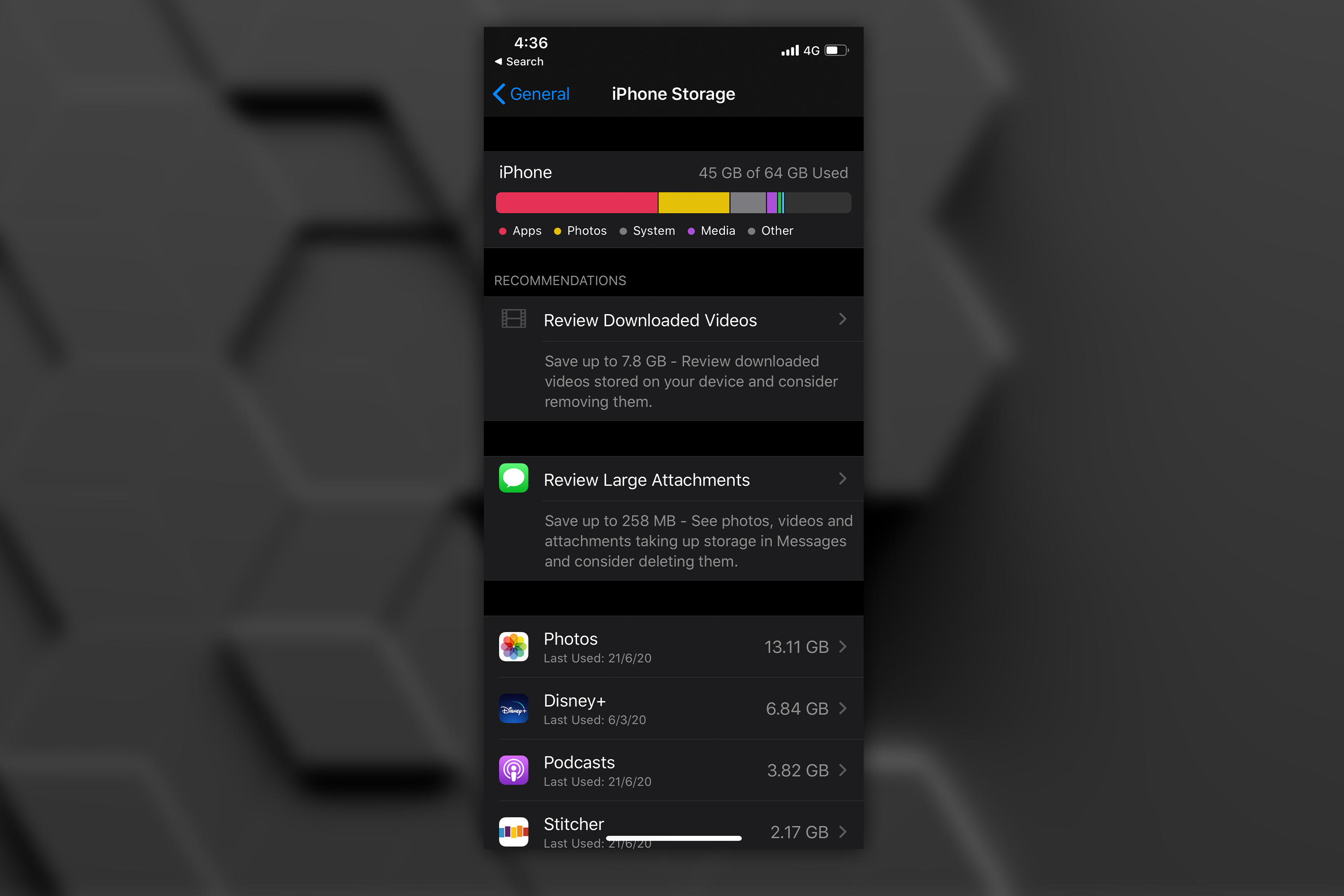
Apps and games
Apps and games use up just over 50% of the storage on my iPhone 11.
When I first purchased my iPhone 11, I subscribed to Apple Arcade, the subscription-based service that allows you to download a wide selection of games. At the time of writing, I’ve got about 17 games downloaded on my device - which is way more than I need and I could happily archive at least 10 of those. Then there are apps. I’m a sucker for an innovative app, even if I end up using about half of them. Currently, I have 78 apps downloaded on my device (outside of system apps that come downloaded on the device).
I’ve got streaming services, like Disney Plus, Netflix, Foxtel Now, Binge, Stan and Prime Video, work-related productivity apps like PowerBI and Slack, every food delivery app in Australia (and a couple of international options), travel apps like Airbnb, Tripview, and Google Translate. Then there’s the data downloaded within those apps. I’ve downloaded a handful of Disney Plus episodes for offline viewing, a few Netflix titles, and a handful of podcast episodes.
Out of all of those, the things that take up the most storage are Disney Plus, Netflix, 10 Apple Arcade games, Twitter, and Messages, in that order.
Those are just the apps and games that are downloaded on my device right now. I use the iPhone’s ‘Offload unused apps’ feature (found in App Store settings). That automatically removes apps I don’t use regularly from my phone’s storage, freeing up space while keeping the documents and data stored on the device. For example, I haven’t used Evernote for a long time, so to free up some space, my iPhone has deleted the app itself but kept all of my documents and data stored locally. So when I decide to use Evernote again, all I have to do is download the app again by clicking the app icon on my home screen, and all of my saved files will be right where I left them.
The next biggest storage hog is photos.
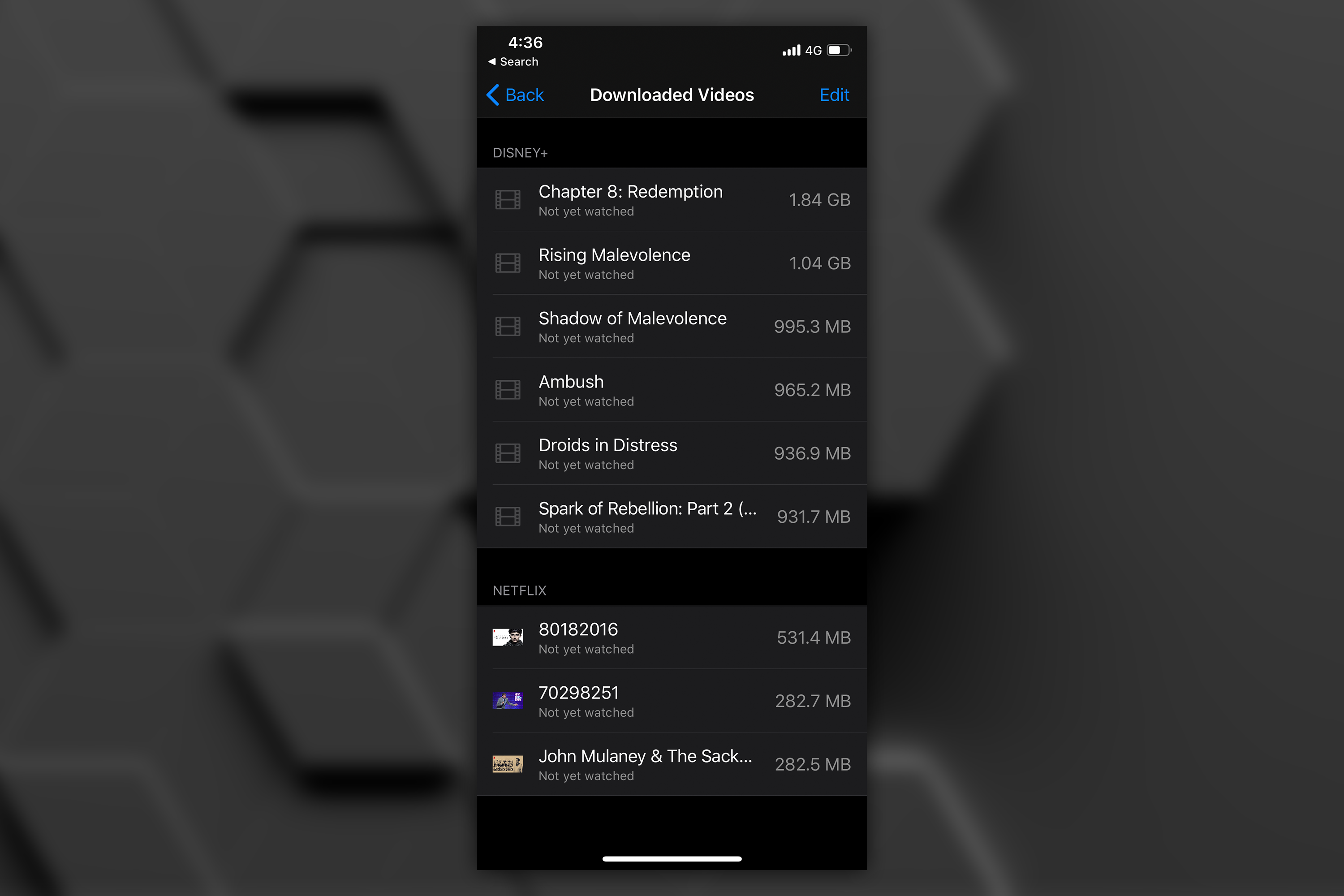
Photos and videos
Photos take up a fair portion of my overall, but even that’s only 7.89GB of storage dedicated to photos. One important thing to note is that I don’t take a lot of photos, and even fewer videos. All up I have 1,489 photos and 742 videos. That works out at roughly 5 photos per day and around 2 videos per day. Realistically, my photography habits aren’t that consistent and the majority of my photos and videos are from a handful of events and holidays.
Even more importantly, I have ‘Optimise iPhone Storage’ enabled in my Photos settings. When my iPhone starts to get low on space, full-resolution photos and videos are replaced with compressed mobile-friendly versions while the high-quality versions are backed up in iCloud. So my iPhone frees up storage regularly and I don’t even have to think about it.
If your smartphone photography habits outpace mine by a long shot, or you simply don’t like the idea of relying on iCloud and prefer to have the originals saved locally, 64GB might not be enough for you.
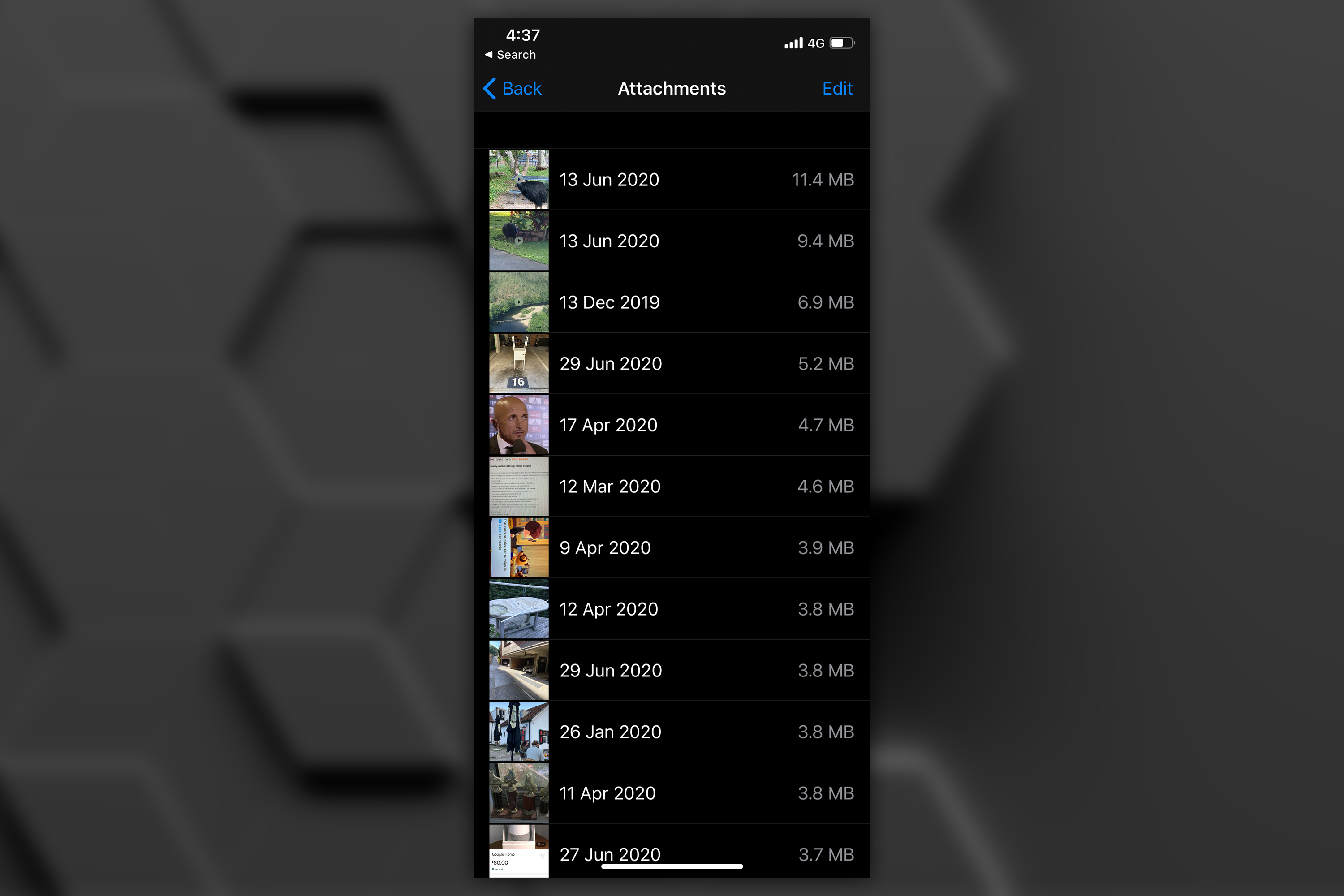
System files
System files take up a little less than 10% of my overall storage space. Now, admittedly this used to be more of a problem with the baseline 16GB iPhone models. Back in those days, system files would use up effectively 50% of your storage space, and users would often feel ripped off when purchasing a 16GB iPhone only to find they really only had about 8GB to play with.
In the iPhone 11 generation, where storage options start at 64GB, system files are far less of an issue.
How to free up storage on a 64GB iPhone
In addition to the two storage optimisation options for apps and photos mentioned above, the Apple iPhone 11 has a few other nifty tricks to help you ditch unused files. Under Settings > Storage, you will find the breakdown of your iPhone’s internal memory. Below that, there are a few recommendations tailored to your usage habits that the iPhone cleverly suggests if you want to free up space.
In my situation, the iPhone 11 Pro recommends reviewing Downloaded Videos and Large Attachments in Messages. These are two areas where my iPhone thinks I can afford to free up some space.
If I click on Downloaded Videos, I’ll find all the titles I’ve downloaded for offline viewing on Disney Plus and Netflix. Great. I can easily say goodbye to those, freeing up 7.8GB of storage. It also lets me know if a downloaded video has been watched or not so I can decide what I want to delete and what I want to keep.
If I select Large Attachments, it gives me a collection of dumb high-res GIFs and images I’ve received from friends and family over the last few months. I wouldn’t have even known my phone was holding onto most of these, so I can happily remove all of them, freeing up another 700MB.
How much does it cost to upgrade?
At the end of the day, 64GB should be more than enough for most.
My usage might seem modest, but I'm tied to my phone and take a lot of photos and videos for work. But if you'd describe my 45GB of used storage as rookie numbers, you might need to upgrade to the 128GB model, at least.
If you're buying an iPhone 12 outright, the jump to 128GB will only cost you an extra $80. The same goes for the iPhone 11. Meanwhile, the jump to the 256GB iPhone 12 comes in at an extra $250 on the RRP of the device.
Opting for the 128GB iPhone 13 instead will cost you $70 more than the 128GB iPhone 12, or $150 more than the 64GB model.
On a 36-month plan, the 128GB iPhone 12 will only cost you between $3 and $4 extra per month versus its 64GB counterpart. In comparison, the 256GB iPhone 12 should cost roughly $9 more per month.
Here's a quick round-up of iPhone plans that illustrate how each provider fares when it comes to the 128GB iPhone 12.
At this point, many consumers might actually find it easier to just opt for the standard 128GB of the iPhone 13 instead. You might not be able to find it for the kind of discounted or depreciated price that the iPhone 11 and iPhone 12 go for nowadays, but if you pair Apple's latest flagship up with a decent promo plan from the right provider, it might actually end up cheaper than its predecessors in the long run.
Check out the widget below for a round-up of iPhone 13 plans:
Related Articles




